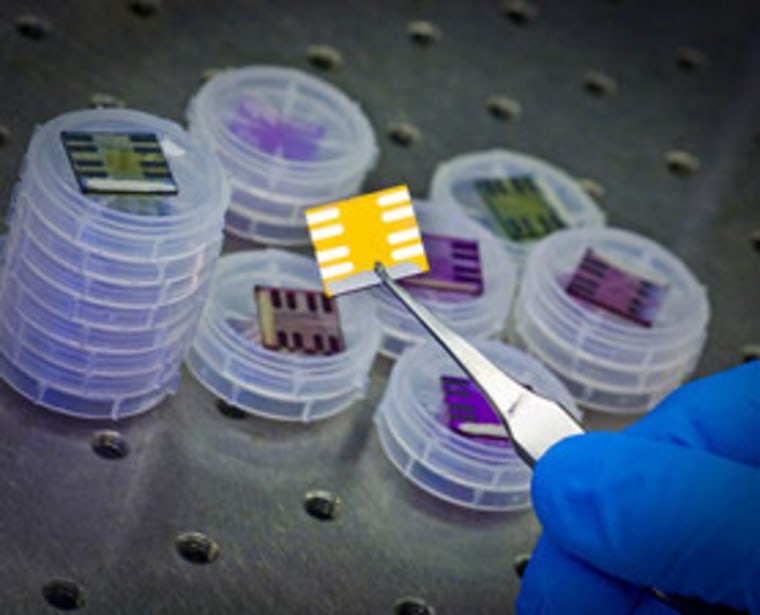Fool's gold, or pyrite, could be a real gold mine for the solar panel industry.
Scientists from the University of California, Berkeley and Switzerland-based NLV Solar are developing solar cells based on one of the most widely available minerals on the planet, pyrite, that could one day be as efficient as today's popular silicon panels, but much thinner and much cheaper.
"This analysis is truly a blend of semiconductor physics and natural resource economic analysis," said Cyrus Wadia, a scientist at the University of California, Berkeley developing pyrite-based photovoltaics.
"Even if we don't feel their scarcity today, if we pulled out all the indium or silicon out of the ground and used it exclusively for solar power, there would be a severe limit to the amount of solar power we could generate."
Wadia and his colleagues took an unusual approach to choosing pyrite as a fuel cell. A quick look at the current state of pyrite-based solar cells is not particularly encouraging.
The best cells can only convert about 3 percent of the light that strikes them into electricity, a number that hasn't changed much since the 1980s. Indium tin oxide, silicon, gallium arsenides and other materials used in solar panels can achieve many times that efficiency.
Instead of focusing on technical accomplishments Wadia looked at the environmental availability of 23 different materials in the Earth's crust. While silicon, a major component of beach sand, might seem limitless, pyrite is much more common -- four to five orders more common in fact.
"We can't change the geology of the Earth, so we might as well go after the materials that is most abundant," said Wadia. "We can barely put solar power in the hands of one million, let alone six billion."
In theory, pyrite also makes for a better photovoltaic material as well. It absorbs more wavelengths of light using a fraction of the material silicon needs. In practice however, pyrite has a big problem that scientists have struggled for decades to overcome.
While all pyrite shares the same chemical formula, its physical structure, or phase, can vary. Unless the entire cell is the same phase, it can only achieve the 3 percent efficiency that has been reported for over 25 years. Even slight variations dramatically reduce its ability to convert sunlight into electricity.
Wadia thinks he has solved this problem by using nanocrystals. By manipulating pyrite at an atomic level, Wadia can increase the number of wavelengths his pyrite solar cell can capture while also eliminating the trace amounts of out-of-phase pyrite.
For now, however, Wadia's two prototype solar cells can only convert 1.6 percent of the light that hits them into electricity. The pyrite is all the same phase, but its different sizes.
He also didn't use only pyrite. He had to incorporate cadmium into the solar cell as well, a material he hopes to remove from later iterations.
Wadia isn't the only scientist looking at pyrite based photovoltaics. NLV Solar and Swedish car maker Koenigsegg recently built a solar-electric concept car known as the Quant, which used pyrite-based solar cells.
With multiple layers of solar cells, NLV boasted that their Pyradian photovoltaic cell can convert 50 percent of all the light that strikes them into electricity. Being a concept car, it is unlikely that it will be available for consumer purchase anytime soon.
Other scientists have also noticed pyrite's potential. "It's absorption coefficient is very high, and it requires very little material to absorb a lot sunlight," said Joseph Luther, a research scientist at the National Renewable Energy Laboratory in Colorado. "What might take 300 microns of silicon to absorb might only take 20 nanometers of pyrite."
Luther agrees that there are still problems that must be addressed before pyrite can truly rival silicon or ITO solar panels, but the idea of being able to reach so many people with potentially cheap and widely available solar power is very intriguing.
"If we could get solar power to the one billion people without electricity, that would be huge, even if its only enough power to light a single light bulb," said Wadia.
